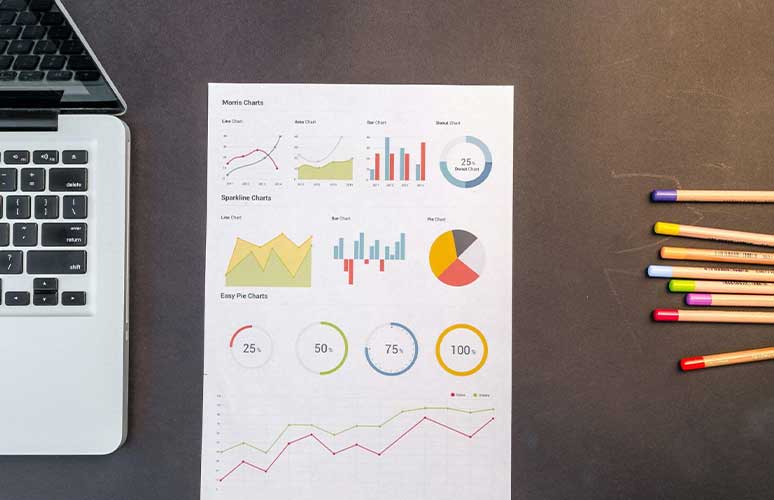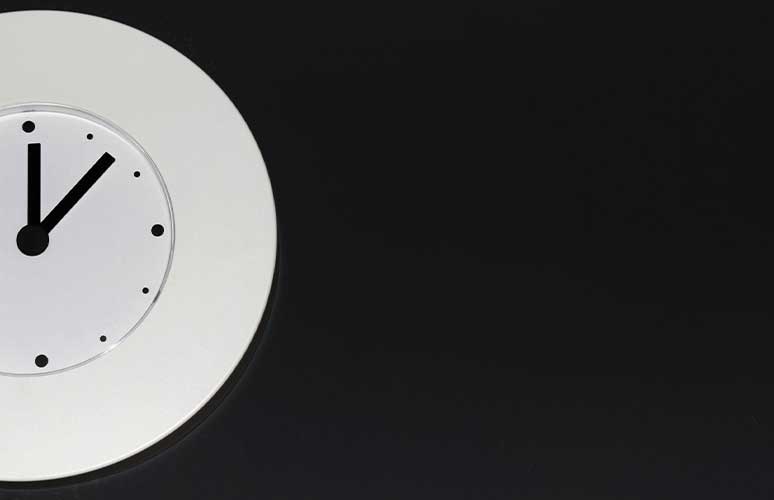When measuring the success of procurement, many businesses miss the opportunity to look beyond cost savings. Unfortunately, these organizations aren’t getting a clear picture of the value provided by the procurement team. While cost savings is undoubtedly important, it fails to capture the full nuance and scope of the procurement process as a whole.
In general, procurement is evolving, and the KPIs for procurement that measures success must evolve as well. In this article, you’ll learn how to measure procurement performance, why you should measure procurement performance, the importance of procurement key performance indicators, and why you need qualitative as well as quantitative data. We’ll also discuss several procurement key performance indicators you may wish to track throughout the procurement process.
If your team would benefit from working with industry professionals to optimize the procurement process and achieve your business objectives, reach out to the Technology Procurement Group. Fill out the form on our Contact Us page, email us at info@TPG-llc.com, or give us a call at 1-888-449-1580.
Table of Contents
Why Should You Measure Procurement Performance?

Put simply, if you don’t measure procurement performance, then you can’t improve it. Procurement performance measurement can help your business answer questions such as:
- Are we improving or declining overall?
- Where do we need to improve?
- How do we compare with other organizations?
Recently, procurement has begun to play a more strategic role in organizations, partly due to the realization that excellent procurement can contribute to competitive positioning.
Because of this shift in procurement’s role, most organizations now expect procurement teams to drive value that goes beyond cost savings. Although cost savings is not the only important factor involved in procurement success, saving on procurement can make an impact on businesses’ bottom lines. Still, this more strategic perspective on procurement has caused leaders to seek out ways they can improve the process.
Using Procurement Software
While it’s possible to record procurement information manually, it’s much simpler and easier to use software to automate the process of collecting data and creating reports. There are many software options available at various price points, and using the software can reduce human error and open employees’ schedules so they can focus on other projects.
The Importance of KPIs to Measure Procurement Performance

Key Performance Indicators, or KPIs, are performance measurement tools presented as numerical data. They enable objective evaluation and can be used to quantify, report, monitor, and track your procurement process’s effectiveness, efficiency, and success in many different areas. KPIs can also benchmark, regulate, and optimize spending, time, cost, and quality.
KPIs are often used to help organizations stay on track with their business objectives, strategies, and procurement goals. They enable teams to highlight their value outside of cost savings and can also be used to set individual and departmental goals.
The best time to establish your KPIs is during the preparation phase of procurement process. When you determine your metrics at this time, it can set you up for success by confirming exactly what you want to get out of the process. Once procurement has concluded, you can use the previously determined KPIs to evaluate your performance. Here are a few questions to ask your procurement team:
- What metrics or KPIs will we be tracking?
- Where will we get the data?
- Who will be responsible for managing ongoing reporting?
- What will we do with all the information we’ve tracked?
Something to keep in mind is that more data is not always better. When you have too much data, it can quickly become overwhelming and meaningless. It’s often better to establish several important KPIs and ensure you know exactly how they will be interpreted.
In addition, it can be very helpful to have an employee with data analytics expertise take on the project of creating reports. Not only should they have a full understanding of the organization’s business needs, but they need to produce easily understandable reports for everyone else involved in the procurement process.
In many cases, procurement goals evolve as the process goes on. As a result, performance metrics can change. If this occurs, you’ll want to make sure that all changes are clearly communicated to anyone who needs to be aware of them.
Quantitative Vs. Qualitative Data for Procurement Performance Measurement

Quantitative data is data that can be quantified or expressed in numbers. Cost savings is one vital example of this type of data, although there are many others.
However, procurement brings a lot of value to the table that can be challenging to measure with data alone. For example, how can you put the value of a good partnership with a telecom supplier into numbers? When data doesn’t tell the entire story of your procurement team’s success, you need to employ qualitative data as well.
There are multiple ways to obtain qualitative data, but three of the most common include surveys, steering committees, and stakeholder assessments.
Surveys
A simple way to collect qualitative data is to create quick surveys to measure your progress and email them out to employees and stakeholders. Within these surveys, be sure to ask specific questions to assess your performance. You might ask:
- How are we doing?
- What could we do better?
- What do you think of the changes we’ve made?
- How are these changes affecting you personally?
- Have any new issues emerged?
It’s helpful to leave space for miscellaneous feedback as well.
Steering Committees
You can create a steering committee by putting together key employees from various departments who have a clear understanding of the organization’s vision, needs, and goals. Set up regular meetings with this steering committee and collect feedback. By putting together representatives from various departments rather than speaking to them separately, you’ll often obtain better insights.
Stakeholder Assessments
Another way to get qualitative data is to reach out to stakeholders for an assessment. You were likely in touch with all of your stakeholders at the beginning of the process to speak about various objectives. Now, you can return to the information you received from them in the beginning and ask them directly if their concerns have been addressed. Explain to them what you have accomplished through procurement, record their thoughts, and ask if any new problems have arisen.
How to Measure Procurement Performance Using KPIs?
Below, you’ll find several KPIs and metrics to measure procurement performance and track the procurement performance measurement.

1. Compliance Rate
One KPI to measure procurement performance is compliance rate. You can measure both policy compliance and contractual compliance, which can be crucial for legal security.
When these compliance rates fall, an increase in indirect and maverick spending can result. It’s best to ensure your telecom contracts have clearly defined SLAs and penalties in order to have a high compliance rate.
Several metrics to note regarding compliance rate include:
- The total difference between the price quoted by the supplier and the price paid by your organization
- The ratio of disputed invoices to total invoices
- Percentage of delivery deadlines met
2. Purchase Order (PO) Accuracy
Purchase order accuracy often referred to as PO accuracy, refers to the percentage of all purchase orders issued that need to be modified or returned due to errors. Low PO accuracy can increase your organization’s operating costs, and measuring this metric can help you ensure that your suppliers are delivering what was ordered and doing so on time.
To measure procurement performance using this KPI, look at the percentage of erroneous delivery compared to the total number of purchase orders during a specified period. You could also track the ratio of products and services delivered outside of the service target.
3. Vendor Risk Management
Protecting the organization and managing risk should always be a priority for procurement teams. You might create quarterly, bi-annual, or annual vendor risk assessment questionnaires that you can send out to vendors and encourage them to complete and return.
4. Vendor Performance
While compliance rate metrics look specifically at various types of compliance, vendor performance looks at other types of value that vendors can deliver. This can be a collaborative process that enables you to provide vendors with meaningful, actionable feedback. Measuring and monitoring vendor performance can improve customer satisfaction and improve productivity and efficiency gains.
You could look at reliability, efficiency, effectiveness, and overall satisfaction, as well as the time it takes for vendors to respond to communications, the quality of the supplied goods or services, and the vendor’s pricing competitiveness. Other factors to consider are delivery lead times, frequency of price changes, the number of backorders, and substitutions made.
5. Product Quality
Product quality is a procurement KPI to measure procurement performance that tracks and reports product issues, such as damaged or returned goods and defects. The most common way to calculate this metric is to determine the percentage of unacceptable inventory. By tracking product quality, you can identify any underperforming vendors and inform future procurement decisions.
6. Supplier Lead Time

Lead time is simple to track; it refers to the number of days a vendor takes to deliver goods or services after a purchase order has been sent and accepted, or, in other words, the time between the supplier receiving an order and shipping an order. An effective way to utilize this KPI is to set a benchmark for your suppliers and then use the metric to establish goals for improvement.
7. Supplier Diversity and Sustainable Sourcing
If your organization has initiatives addressing sustainability, diversity, or other social issues, you could set benchmarks and goals around concepts like sustainable sourcing and supplier diversity. This way, you can make sure that your procurement KPIs reflect your organization’s priorities.
8. Rate of Emergency Purchases
An emergency purchase is an unplanned order made to prevent product and service shortages. You can measure this metric by calculating the ratio of emergency purchases to total purchases during a set time period. When you lower your organization’s rate of emergency purchases, you can save money, ensure continuity, and reduce supply risks.
9. Purchase Order Cycle Time

The KPI of purchase order cycle time measures the days or hours that elapse between the time a purchase order is submitted to the time it’s transmitted to a vendor, covering the end-to-end ordering process.
10. Vendor Availability
Vendor availability can help your organization determine a vendor’s overall reliability by measuring its capacity to respond to emergency demands. You can calculate it by looking at the ratio of the times that items were available on the vendor’s side to the number of orders your organization placed with that vendor overall.
11. Cost Savings

Cost savings consist of the total value of vendor discounts resulting from proper telecom contract negotiation tactics. You can achieve cost savings by going through the RFP process to find a new vendor or renegotiating with a current supplier.
12. Procurement Cycle Time
Procurement cycle time measures the length of the procurement process from the beginning to the end and is typically measured in days. Most organizations mark the start of the process when the procurement team approves a stakeholder request, and the end of the process is typically when the contract has been executed.
According to the American Productivity and Quality Center, top procurement performers are more likely to save time on the procurement process, and reduced cycle time is associated with improved performance as it enables teams to focus on other high-value tasks.
Long procurement cycle times can indicate that the RFP process is inefficient, discourage stakeholders from participating in the process, and decrease Spend Under Management (SUM, discussed later in the article).
One way to improve procurement cycle time is to utilize procurement software to decrease hours spent writing RFPs, sending them out, and evaluating vendors’ bids.
13. Cost Avoidance
The concept of cost avoidance refers to any actions taken to reduce future spending. For instance, perhaps you know that your current supplier increases their costs by 10% each year. You might engage in cost avoidance by proposing a 36-month contract renewal at a five percent increase each year, saving your company a significant amount of money.
14. Cost Per Invoice and Purchase Order

Calculating the amount of money spent on invoices and purchase orders can indicate whether processing costs could be decreased through automation. Organizations that use a manual approach have higher processing costs per invoice and purchase order than those with automated processes, ranging from $6 to $50 per invoice.
15. Spend Under Management
Spend Under Management, or SUM, is the percentage of the procurement spend that is compliant with procurement policy and properly managed by the procurement team. When your SUM increases, you’re better able to optimize cost and forecast expense increases.
You can calculate SUM by subtracting maverick spend (purchases that don’t follow the organization’s established procurement policy) from the total approved spend, which includes direct, indirect, and service-related costs. Unmanaged or maverick spending comes with negative effects, like elevated risk and increased waste.
Most companies aim for at least 80% managed spending, and a common approach to maximizing savings involves reviewing areas of unmanaged spending.
16. Procurement ROI
Procurement return on investment (ROI) is commonly used for internal analysis. It looks at annual cost savings divided by annual procurement cost to determine the cost-effectiveness, efficiency, and profitability of investments made through procurement. Often, procurement technology tools, software, and automation improve procurement ROI.
17. Price Competitiveness

Looking at price competitiveness can help your organization prioritize vendors that offer competitive pricing advantages. This can help to prevent monopolies from forming, which, in turn, can prevent quality from gradually decreasing over time.
You can measure price competitiveness by looking at benchmarking figures and comparing the price you paid to the published market prices, therefore comparing your organization’s spend to the industry average. This can help the procurement team get a better feel for the market conditions and make sure that you’re not paying too much for telecom products and services.
Improve Your Procurement Success with TPG

Hopefully, you have learned how to measure procurement performance using procurement KPIs. Whether you’re lacking a clear procurement strategy or struggling to meet your organization’s procurement objectives, TPG is here to help.
Not only do we offer telecom procurement strategy consulting and IT procurement services, but we also provide telecom expense management and wireless expense management, RFP management, wireless expense reduction, and telecom contract negotiation services.
Interested in getting more information? Call us at 1-888-449-1580, email us at info@TPG-llc.com, or fill out the simple form at the bottom of the Contact Us page. We look forward to hearing from you!




